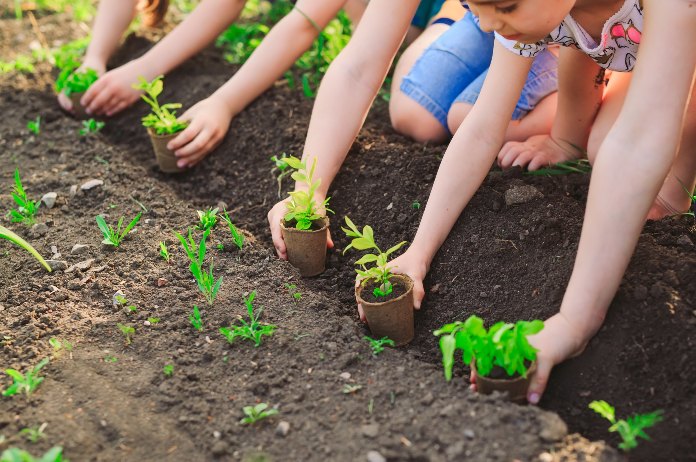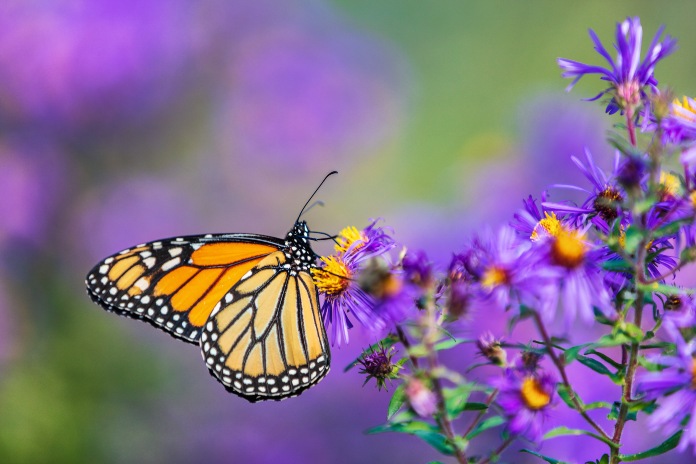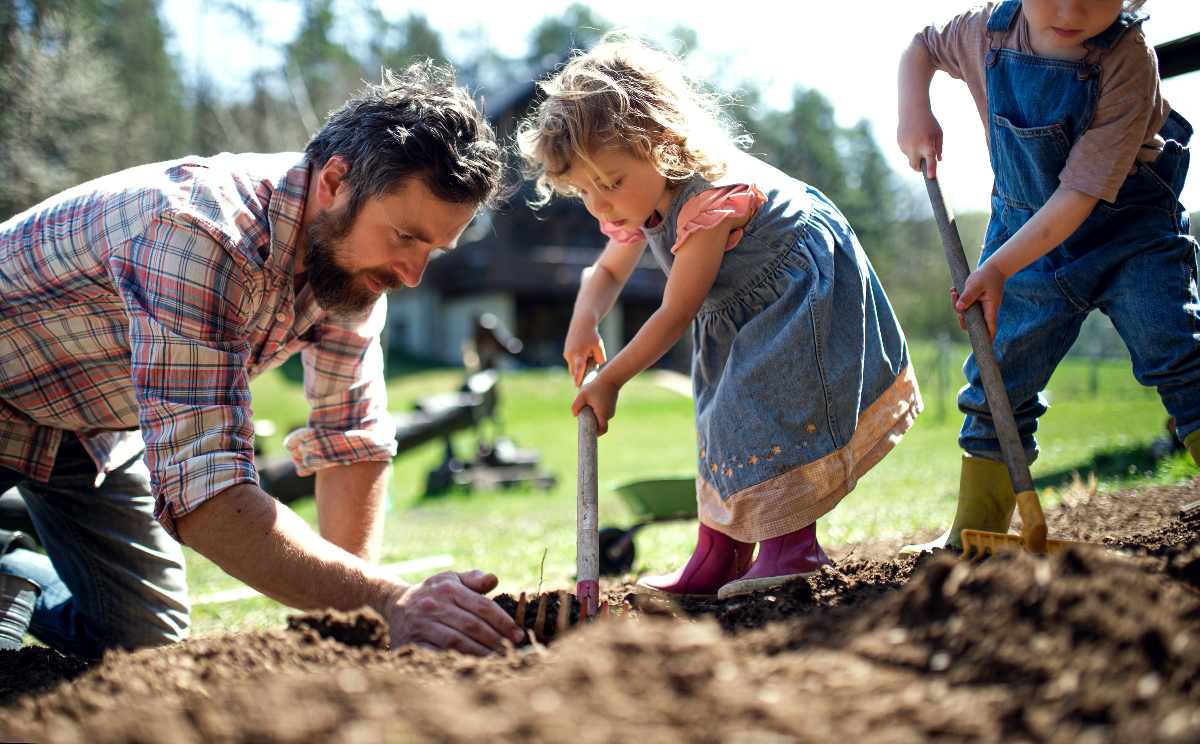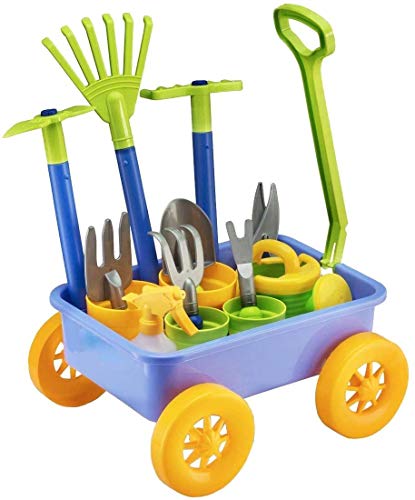If you’re keen to spend more time with your kids, gardening may be a fun activity to do together.
One way is to start by introducing them to fun names for different plants. You can also teach them about various plants, their scents, and textures. Your kids will learn about different things that they might not have otherwise known about.

Here are our top tips to help get children interested in gardening.
Tips for getting your children into gardening
Plants With Funny Names
Plants with funny names are fun to talk about and can get your kids excited about gardening. Some have unusual looks, such as the avocado plant, but others are named for their odours or other peculiar characteristics.
A good example is impatiens, which is also known as Bizzy Lizzy. You can also have a contest among your kids to name plants. You can even name plants after fairy tales! Kids will love naming things themselves, and they will be more likely to get involved in the garden.
Another plant with a funny name is the yarrow. It has small hairs on its stems and leaves, earning it the names catchweed, sticky bob, and goosegrass. It produces tiny star-shaped flowers from spring to summer. Another yarrow plant is the sneezewort, which has showy white flowers in the mid to late summer.
Another fun plant is the hibiscus, which is also a favourite among children. This exotic-looking plant dies off during the fall and then grows back in the spring. Its huge flowers make it look like something from a fairy tale. And if your kid is a fan of pizza, you can grow a few tomatoes and make a tomato sauce out of them.
Some other plants have funny names as well, such as kale. Kale is a popular leafy green vegetable. The name comes from the Maori word for loop. It is also a good idea to label plants that eat insects with funny names.
Then, the oak tree is commonly known as the king of the forest. Other interesting plant names include the oleander and the coleus. The name oleander comes from a Greek word meaning “golden flower”. Both are edible and showy plants!
Plants that attract butterflies
If you’d like to attract butterflies to your garden, to make it more interesting for kids, you can plant a butterfly-friendly variety of flowers.
Some of the best plants for butterflies are those that are hardy and can tolerate a wide range of temperatures. You can also plant colorful pot marigolds, which are inexpensive and easy to grow. While they aren’t a nectar plant, they do produce vibrant flowers that will attract a wide range of butterflies, including monarchs.
You can choose to add different kinds of flowers and plants to your existing space, or you can start a new garden from scratch for your children and their butterflies.
The size of the garden you choose should be appropriate for your kids’ age and level of interest. Usually, a small garden of about three by six feet will be large enough to host plenty of different types of plants, including some species that cater to butterflies.

Plan the planting of nectar-rich plants. Try to find a variety of different types of plants, such as annuals and perennials. A variety of flower colours will attract different species of butterflies, so it’s a good idea to include native and cultivar varieties.
Plants that attract butterflies will make your garden a vibrant and busy place to be. In addition to keeping insects at bay, butterflies will also help pollinate your flowers.
Plants that attract butterflies also include dianthus, sweet alyssum, nicotiana, and asters. Another plant that is a favourite for butterflies is dill, a herb that is generally grown for culinary purposes. It has yellow buds and feathery leaves and can grow up to 4 feet tall. The black and anise swallowtails are both attracted to dill and parsley.
Plants that encourage science lessons
Gardening provides a hands-on opportunity for students to explore a variety of scientific topics.
The scientific method can be applied to gardening experiments, enabling students to learn about biology, chemistry, and leadership skills. They can conduct experiments, draw pictures, and record their data in a journal, on a chart, or on a camera. Students can also study how animals and plants respond to their surroundings. In addition, they can study the effects of different weather conditions on their garden.
For younger children, simple plants such as pine cones can be used as learning tools. Older children can experiment with phototropism and how plants grow toward the light source. Using a shoebox, they can design a maze for plants to navigate, and they can even conduct experiments to find out which type of light works best. It is a handy STEM activity that involved getting their hands dirty as well!
Plants can also be used to teach students about reproduction. Some students enjoy taking apart flowers and learning about their parts. They can also learn about the colour of leaves. In the same way, they can experiment with different types of plants and compare them.
In the end, they can share their results through science fair exhibits, written science reports, or presentations.
In addition to using these plants as educational tools, they can also create signs for their gardens that promote their science learning.
Seeds
Seeds are another excellent way to teach children about the process of growth. For example, they can plant sunflower seeds in the spring. Children can observe the growth of the seedling and learn about how they grow into plants.
They can also link this activity to literacy, by reading a story such as The Sunflower. They can also experiment with osmosis and learn about hidden pigments in the leaves.
Young children are naturally curious about nature. Their natural surroundings are the best place for them to learn about the world around them. And gardening helps children build responsibility and foster a sense of responsibility.
In addition to learning about science, children can also enjoy the fun activities of planting seeds, planting flowers, weeding, and even cooking. However, before starting a garden, make sure that the environment is safe for kids.

Plants that stimulate curiosity
Children often ask a lot of questions, so it’s important to introduce them to plants that stimulate their curiosity.
You can also share scientific facts about plants and the way they grow. You can also talk about the life cycle of plants with your children and help them learn about sustainability.
You can read books together about various topics such as the life cycle of plants and sustainability. For example, you can teach them how to measure plants, and they can keep a journal of their observations. They can also observe weather cycles and insects living in the garden.
Another way to encourage your child’s natural curiosity is to plant herbs in your garden. Many herbs are easy to grow and are perfect for introducing kids to gardening. Try parsley or basil. These herbs can be used fresh or dried. Your children will be fascinated by the colourful leaves of herbs.
Another popular plant for young children to enjoy is catnip. This perennial plant is drought-resistant and has attractive flowers. Young children love growing catnip for their pets. Chives are a great plant to grow with kids, too, because they add a garlic and onion flavour to food. Another plant that is great for your kids’ curiosity is the coneflower, a North American native wildflower with ray-like petals and a pincushion-like centre. They are edible and make great cut flowers. They will also attract butterflies.
Important lessons takeaway
Children often show a great sense of self-confidence as they grow and learn to take care of their own plants. The time and patience involved in growing and caring for a garden are important to a child’s development. They will also learn about the importance of environmental conservation and learn that a healthy environment means no plastic trash.
Another great way to encourage children’s natural curiosity is by letting them touch and play with different parts of the garden. Let them touch the soil, smell the flowers, and hear the different sounds of insects. By using tools such as hoes, water buckets, and seeds, children can develop their motor skills and learn about gardening through their own experiences. They will also develop important life skills such as responsibility and patience.
Best-selling children’s gardening set
Stuck for inspiration? Check out our list of best-selling children’s gardening sets on Amazon.
- 𝟗 𝐏𝐂𝐒 𝐆𝐀𝐑𝐃𝐄𝐍 𝐓𝐎𝐎𝐋𝐒 𝐊𝐈𝐓: All-in-one pack kids garden tool set including 1x canvas bag, 1x sprayer, 1x shovel rake great for digging, 1x tag, 1x...
- 𝐇𝐄𝐀𝐕𝐘 𝐃𝐔𝐓𝐘 𝐌𝐀𝐓𝐄𝐑𝐈𝐀𝐋: The garden tools set are made from high-quality metal and non-hazardous plastic for long durability. The metal tools ensure...
- 𝐏𝐄𝐑𝐅𝐄𝐂𝐓 𝐋𝐄𝐀𝐑𝐍𝐈𝐍𝐆 𝐓𝐎𝐎𝐋: This kids gardening toolset will be a great way to develop abilities and DIY skills. These complete kids garden tools...
- Kids Gardening Set Childrens Gardening Set Kids Gardening Tools Kids Garden Tools Gardening Tools for Kids Kids Gardening Kit Garden Tools for Kids Unicorn Gardening Set for girls.
- Brand : Cheerful Children Toys
- Product type: PRETEND PLAY TOY
- Children’s gardening tools: Set of 6, include mini watering can, garden tool bag, mini hand rake, trowel, fork and gloves.
- Increase childhood fun: your children will be happy when growing plants with friends or parents, in addition, growing plants is a meaningful activity.
- A healthy activity: children plant in the outdoor garden, embracing the nature, flowers and grass. Help them do more exercises for keeping healthy.
- GREAT KIDS GARDEN TOOLS - This 16-piece gardening tools playset will help your kid become a pro gardener. These garden tools are perfectly-sized for their hands to get your garden growing
- PERFECT BEACH TOY - We designed these toy tools set with versatility and practicality in mind. You can take these tools when you’re heading to a long holiday beach and build sand castles, towers,...
- SET INCLUDES - ✔ 8 gardening tools (3 large and 5 small) ✔ 4 flower pots ✔ water pail ✔ water spray bottle and ✔ wagon (measures 14” x 12” x 7”. The handle of the wagon extends up to...
- VERY STURDY, HIGH QUALITY TOOLS :kids beach spades sand shovels are designed for outdoor play time,or working alongside mom and dad in the garden.
- FOUR PIECES UNIQUE GARDEN TOOL SET :This set includes a fork, trowel, rake and shovel. Each tool is constructed of real, high quality metal, with a durable hardwood handle, measure 8-inches in length.
- SAFE AND RIGHT SIZE FOR CHILDREN/KIDS : Right size for kids and perfect fit for little hands, not too sharp, too heavy and there are NO sharp edges. Suitable for flower and vegetable planting,...
Last update on 2024-04-01 / Affiliate links / Images from Amazon Product Advertising API
You may be interested in…
This article may include affiliate links to products and services where we may receive a small fee to support the running of this site if you make a purchase or is a sponsored article from one of our select editorial partners providing valuable advice and information to our readers.




































































